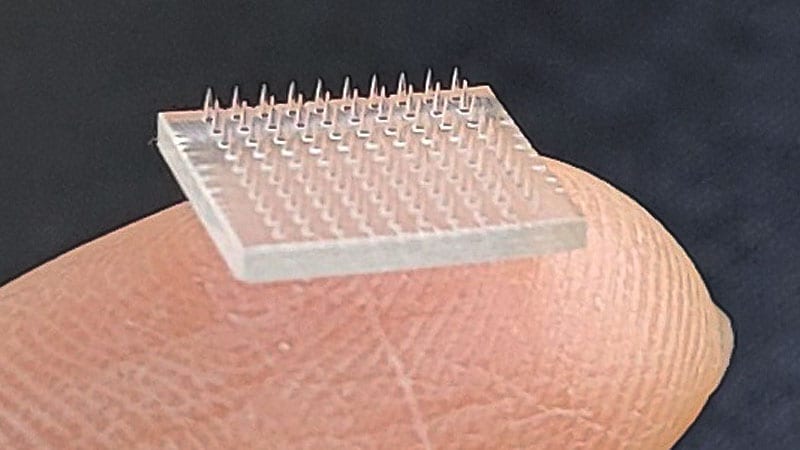Most vaccines are given with hypodermic needle injections. But shots aren’t necessarily the most efficient or effective way to deliver a vaccine. Scientists have been experimenting with microneedle patches to painlessly deliver a vaccine into the outermost layer of the skin with dozens of extremely tiny needles coated in the vaccine solution.
Now, researchers have found a 3D printing method that lets them customize microneedle shapes in the patches for different pathogens, such as flu, measles, hepatitis, or COVID-19. In tests using mice, the patches led to stronger and longer-lasting immune responses than traditional shots under the skin. The research team described their findings in the Proceedings of the National Academy of Sciences.
Tiny Needles, Big Advantages
Previous research has shown delivering vaccines into the skin can cause a stronger immune response because the skin has a high concentration of immune cells. But shots can be painful and require skilled medical providers.
Microneedles painlessly deliver the vaccine into the skin without the need for a trained clinician. In fact, a person can even give the vaccine to themselves.
The needles ― made of metal, silicon, or plastic ― are so tiny that they puncture only the tough outermost layer of skin. The prospect of a painless vaccination without a hypodermic needle may ease anxiety in people who fear needles.
Scientists also can store dried patches after coating them with the vaccine solution, so there’s no preparation needed before giving the vaccine and the patches may not even require cold storage. This latest study suggests that the patches generate a stronger immune response than standard shots, allowing for a smaller dose than traditional vaccine delivery methods and possibly fewer side effects.
Breaking the Mold
Past methods of making microneedle patches often used molds, but that approach limited the ability to customize patches for different diseases. Repeatedly using same mold also can blunt the tiny needles.
For the 3D-printed patches, Cassie Caudill at the University of North Carolina at Chapel Hill and her colleagues used a printing technique that allows greater control over and consistency in the shape of the microneedles. The investigators printed two shapes: a slender pyramid microneedle that is similar to previous versions, and one with serrated grooves that resembles a pine tree.
The increased surface area from the grooves let researchers add 36% more of the ingredient that causes an immune response, compared to using only the pyramid shape, yet still less than a conventional shot. At only 1 centimeter by 1 centimeter, each patch contains 100 microneedles that are just over 1 millimeter long. The researchers found that in mice, the patch drew a stronger immune response than a conventional shot, despite carrying a much smaller dose of vaccine ingredient.
Source
Proceedings of the National Academy of Sciences of the United States of America: “Transdermal vaccination via 3D-printed microneedles induces potent humoral and cellular immunity”
